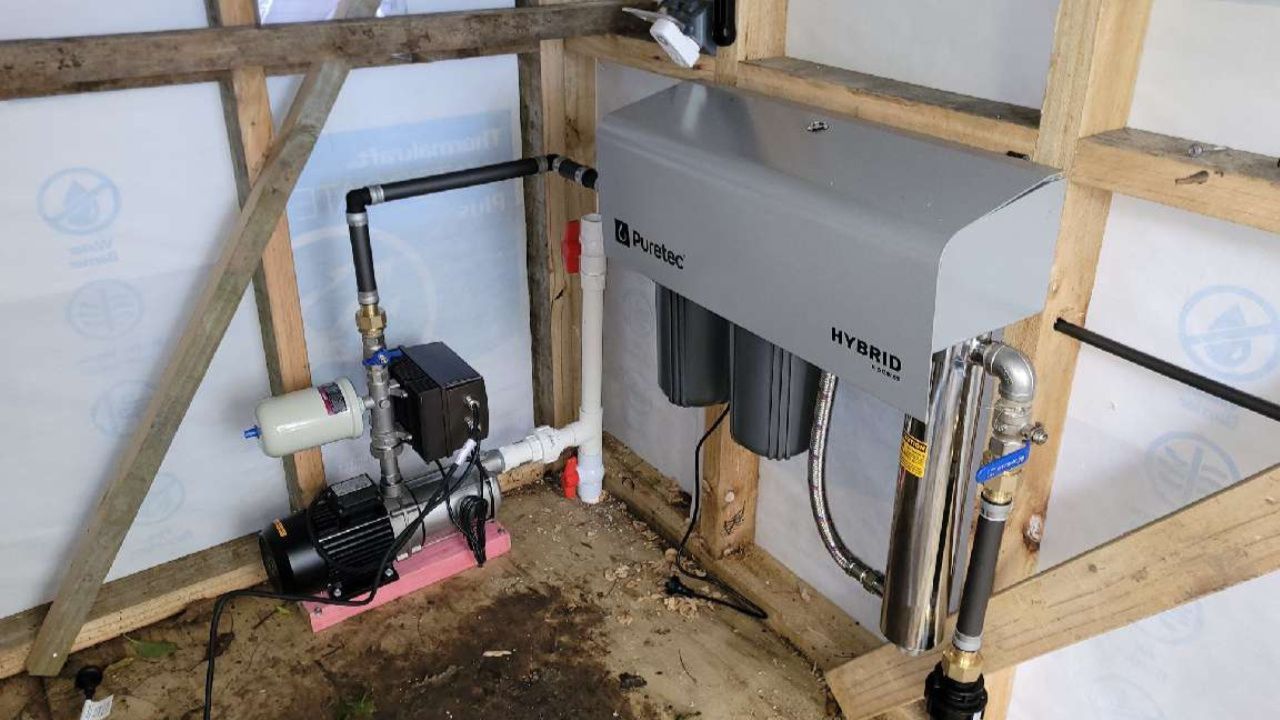Water pumps are essential for moving and pressurising water in a wide range of settings—from residential homes to commercial buildings, farms, and beyond. With such a variety of pumps on the market, figuring out which one suits your situation can be overwhelming. Below, we break down the most common types of water pumps, explain how they work, and suggest typical applications.
1. Centrifugal Pumps
How They Work:
Centrifugal pumps use an impeller—a rotating disc with vanes—to create a spinning motion that pulls water into the pump and then pushes it out at high pressure. They’re known for their simple design and ease of maintenance.
Common Uses:
- Moving water from tanks or reservoirs to irrigation systems
- Boosting water pressure in domestic plumbing
- Industrial applications requiring steady flow
Key Advantage:
Relatively low cost and efficient for pumping large volumes of water at moderate pressures.
2. Submersible Pumps
How They Work:
Submersible pumps are designed to operate underwater. The motor is hermetically sealed in a housing that prevents water from entering. Because they work directly in the fluid being pumped, they don’t need priming.
Common Uses:
- Pumping water from boreholes or wells
- Flood Water removal in basements
- Sewage and wastewater management systems
Key Advantage:
They’re less prone to cavitation (air bubbles that cause damage) and can handle higher head pressures, making them ideal for deep-well applications.
3. Jet Pumps
How They Work:
Jet pumps utilise an impeller and a jet nozzle to create suction and draw water up from a source, often below ground. They typically sit above ground and can be either shallow-well or deep-well varieties.
Common Uses:
- Household water supply for homes that rely on wells
- Shallow boreholes or water sources less than 7–8 metres deep (shallow-well jet pumps)
- Deeper wells up to approximately 20 metres (deep-well jet pumps, which often include two pipes)
Key Advantage:
They’re comparatively simple to install and maintain, as they remain above ground.
4. Pressure Booster Pumps
How They Work:
A pressure booster pump increases low water pressure from a municipal supply or storage tank. Some units come with a pressure tank or sensor that maintains a set pressure level, switching on and off as needed.
Common Uses:
- Residential properties with weak mains pressure
- Commercial buildings requiring consistent high water pressure
- Irrigation systems where uniform pressure is crucial
Key Advantage:
Provides a reliable, high-pressure water supply for showers, taps, and appliances without the need for large, complex installations.
5. Diaphragm Pumps
How They Work:
A diaphragm pump uses a flexible membrane to draw in and push out fluid in a reciprocating motion. This design ensures that the fluid doesn’t come into contact with the moving mechanical parts of the pump.
Common Uses:
- Chemical or wastewater handling
- Small-scale water transfer tasks (e.g., RVs or boats)
- Applications requiring pumps that can run dry without damage
Key Advantage:
They’re self-priming and well-suited for liquids containing particulates or sensitive chemicals.
6. Peristaltic Pumps (Specialised)
How They Work:
Though less common for everyday water supply, peristaltic pumps use rollers to compress and release a flexible tube, moving fluid along without exposing it to external components.
Common Uses:
- Food and beverage industries
- Chemical dosing in water treatment plants
- Medical environments needing sterile fluid transfer
Key Advantage:
Contamination risk is extremely low since the fluid only contacts the internal tubing, and it’s easy to swap out tubes for cleaning or replacement.
Selecting the Right Pump for Your Needs
- Identify Water Source & Required Pressure: If you’re pumping from a deep well, a submersible or deep-well jet pump may be best. For boosting mains pressure, a pressure booster pump is ideal.
- Consider Flow Rate: A domestic household pump might need to deliver less than 40 litres per minute, whereas a farm irrigation pump could require much more.
- Check Installation Constraints: Above-ground vs. submerged, space limitations, and potential noise factors are all important in choosing the right pump.
- Maintenance & Service: Different pump types have unique servicing schedules. Submersible pumps can be trickier to access, whereas centrifugal pumps can be inspected more readily.
How Citywide Plumbing Can Help
At Citywide Plumbing, we understand that selecting the best water pump involves balancing performance, reliability, and cost. Our team offers:
- Professional Assessments: We analyse your water source, usage patterns, and property layout to recommend a tailored solution.
- Quality Brands & Installations: From booster pumps for homes with low mains pressure to high-performing submersibles for deep wells, we provide robust, reputable products backed by expert installation.
- Ongoing Maintenance & Repairs: Whether it’s a routine check-up or an urgent fix, our technicians ensure your pump stays in top condition year-round.
Final Thoughts
Recognising the different types of water pumps—and how each is best applied—ensures your home or business receives a stable, efficient water supply. Whether you need a simple booster pump for better shower pressure or a heavy-duty submersible unit for a rural property, making an informed decision will save you time, money, and hassle down the line.
If you’re ready to explore your options or have questions about installing or servicing a water pump, contact Citywide Plumbing. We’re here to guide you every step of the way, from initial selection through to long-term support.


